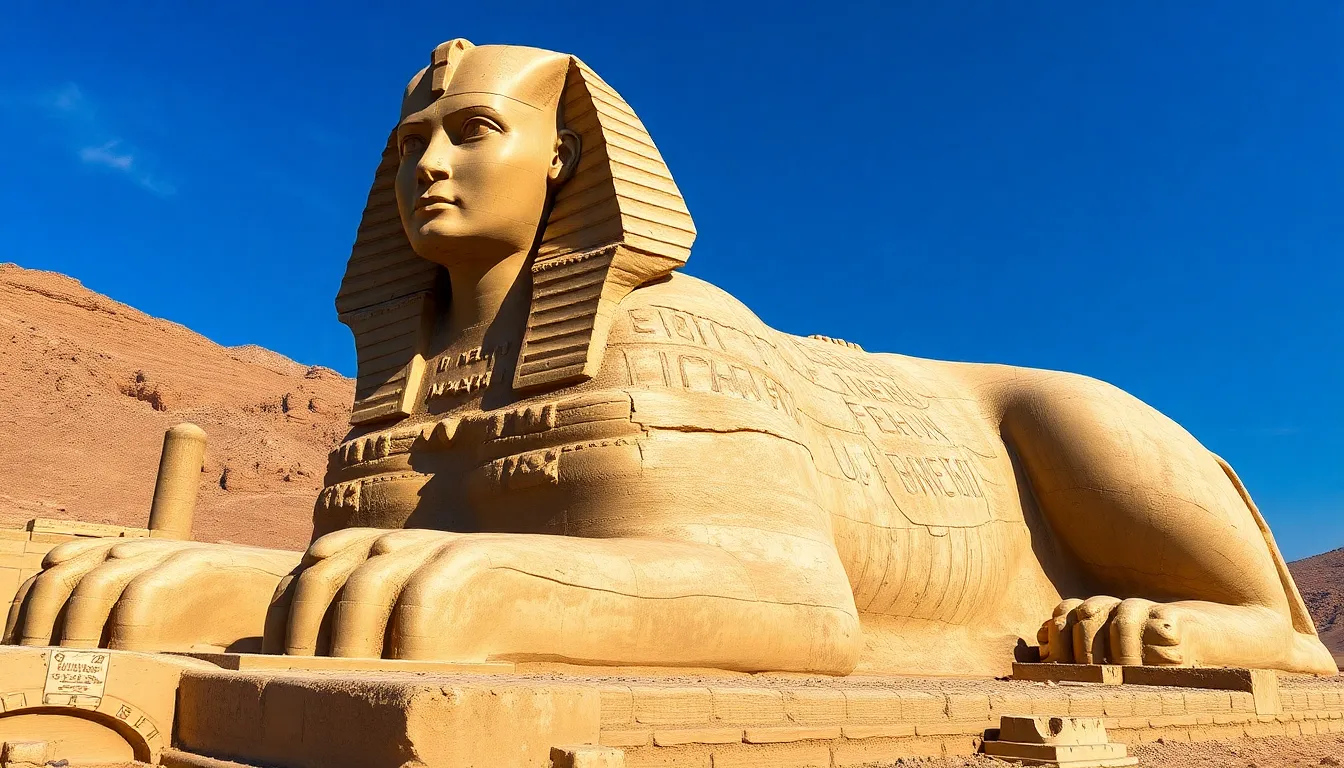The Sphinx’s Riddle: A Gateway to Understanding Greek Myths
I. Introduction to the Sphinx and Its Riddle
The Sphinx is one of the most enigmatic figures in Greek mythology, known for her imposing presence and the riddle she posed to travelers. This mythical creature is often depicted as a lion with the head of a woman, combining strength and intellect in a single form. The Sphinx’s riddle, which is central to the story of Oedipus, serves as a crucial thematic element that explores the nature of knowledge, truth, and the human condition.
II. The Sphinx: A Mythical Creature in Ancient Greece
In ancient Greek lore, the Sphinx is characterized by her dual nature. She represents both danger and wisdom, posing a threat to those who cannot solve her riddle while simultaneously embodying the quest for knowledge.
- Description and Symbolism: The Sphinx is often portrayed as a creature with the body of a lion, the wings of an eagle, and the head of a woman. This hybrid form symbolizes the blend of ferocity and intelligence, representing the dual forces of nature.
- Role in the Myth of Oedipus: The Sphinx plays a pivotal role in the myth of Oedipus, where she terrorizes the city of Thebes, blocking its roads and devouring anyone who cannot answer her riddle.
III. The Riddle of the Sphinx: An Analysis
The riddle posed by the Sphinx is one of the most famous in mythology:
“What walks on four legs in the morning, two legs at noon, and three legs in the evening?”
This riddle is rich with layers of meaning and invites various interpretations. Each component of the riddle can be broken down as follows:
- Four legs in the morning: This refers to a baby crawling on all fours.
- Two legs at noon: This symbolizes an adult walking upright.
- Three legs in the evening: This suggests an elderly person using a cane for support.
Overall, the riddle encapsulates the human experience from birth to old age, highlighting the journey through different stages of life.
IV. The Riddle as a Metaphor for Human Experience
The riddle of the Sphinx serves not only as a test of intellect but also as a profound metaphor for the human experience. It reflects significant themes:
- Life: The riddle illustrates the progression of life, emphasizing growth and change.
- Age: Each stage of life brings different challenges and adaptations.
- Mortality: Ultimately, the riddle points to the inevitability of aging and death, making it a contemplative reflection on the human condition.
In this sense, the Sphinx’s riddle becomes a lens through which we can explore our own struggles, wisdom, and the quest for understanding.
V. Oedipus: The Hero’s Encounter with the Sphinx
Oedipus’s journey begins when he learns of the Sphinx’s terror over Thebes. He is determined to save the city and confronts the creature. Oedipus answers the riddle correctly:
“Man.”
This answer not only signifies his intellectual prowess but also marks a turning point in his life and the unfolding of his tragic fate. The significance of his answer lies in its dual nature—while he triumphs over the Sphinx, it foreshadows the subsequent revelations about his own identity and destiny.
VI. The Sphinx’s Riddle in the Context of Greek Philosophy
The Sphinx’s riddle resonates deeply with philosophical inquiries into knowledge and truth. Its implications can be explored through various philosophical lenses:
- Knowledge: The riddle challenges the notion of understanding oneself and the world, prompting deeper reflection on the nature of wisdom.
- Truth: It raises questions about perception and reality, illustrating the complexity and often paradoxical nature of truth.
Subsequent philosophers have drawn upon the themes present in the riddle, influencing discussions on existentialism and the nature of human existence.
VII. The Sphinx and Its Legacy in Art and Literature
The Sphinx has inspired countless works of art and literature throughout history. Its riddle and the associated myth have been depicted in various forms:
- Ancient Art: The Sphinx appears in sculptures, pottery, and murals, often symbolizing enigma and mystery.
- Modern Interpretations: The riddle continues to influence contemporary literature and art, serving as a metaphor for the challenges of understanding and knowledge.
This enduring legacy highlights the Sphinx’s role not only as a figure of mythology but as a symbol of humanity’s quest for meaning.
VIII. Conclusion: The Enduring Relevance of the Sphinx’s Riddle
The Sphinx’s riddle remains a poignant reminder of the complexities of human existence. It teaches us valuable lessons about the nature of life, the inevitability of aging, and the pursuit of knowledge. As we reflect on the riddle, we recognize the Sphinx as a symbol of the timeless quest for understanding within the rich tapestry of Greek mythology.




